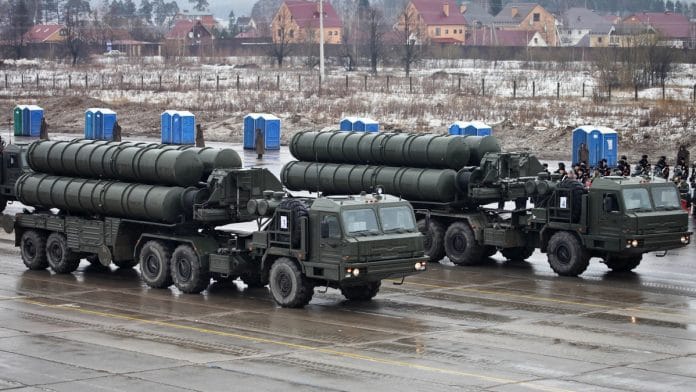New Delhi: Sidestepping the US pressure, India has decided not to forgo the $5.2 billion deal with Russia for procurement of the lethal S-400 Triumf missiles, which will be India’s biggest air defence system against China and Pakistan. The S-400s will be deployed from the end of 2020 onward.
With US Secretary of State Mike Pompeo in town, top diplomatic sources said India meets the criteria for a US sanctions waiver for procuring S-400s from Russia and that the Trump administration has “enough flexibility” on the issue.
Sources also said New Delhi cannot “wish away” its long-standing defence ties with Moscow.
ThePrint takes a look at the capabilities of the S-400 air defence system and the US’ CAATSA law that America could use to restrict India-Russia defence cooperation.
What is CAATSA?
On 2 August 2017, US President Donald Trump had signed into law the ‘Countering America’s Adversaries Through Sanctions Act’ (Public Law 115-44), which among other things, imposed new sanctions on Iran, Russia and North Korea.
CAATSA is a specifically enacted legislation that aims to prevent revenue from flowing to Russia.
If the US chooses, it can impose sanctions on India under CAATSA for the multi-billion dollar deal with Russia inked in October 2018.
However, India is of the firm opinion that its relations with Russia are historical and that CAATSA is a US law and not an Act passed by the United Nations.
Capabilities of S-400
The S-400 Triumf is the most modern air defence system in the Russian arsenal. It is capable of destroying incoming hostile aircraft, missiles and even drones within a range of up to 400 km. It has a tracking capability of nearly 600 km.
The system has been designed to knock down flying targets, including those equipped with stealth technologies, at a distance of about 400 km. It is also capable of taking out ballistic missiles and hypersonic targets. Compared to its predecessor — the S-300 — the S-400 has a firing rate that is 2.5 times faster.
Each S-400 battery comprises long-range radar, a command post vehicle, target acquisition radar and two battalions of launchers (each battalion has eight). Each launcher has four tubes.
The S-400 can be armed with four different types of missiles with ranges of 400 km, 250 km, 120 km and 40 km. The Long Range (LR) radar can track more than 100 flying objects simultaneously while being able to engage a dozen targets.
Each component of the system — the radars, the command post vehicles and the launchers — is mounted on multi-axle, multi-wheel Ural carriers that can move on uneven terrains. This mobility makes the batteries difficult to detect because they can keep changing locations, besides expanding the missile engagement zone (MEZ).
China was the first country to seal a government-to-government deal with Russia in 2014 to procure the lethal missile system. Moscow has already started delivering an undisclosed number of S-400s to Beijing.
India wants the long-range missile system to tighten its air defence mechanism, particularly along the nearly 4,000-km-long Sino-India border.
Also read: India resists US pressure on S-400 in Pompeo-Jaishankar meet, gives in on Iran oil







Initial reports indicated that the S 400 will first be deployed around Delhi. So, the border regions get low priority and the key focus is to protect our politicians of all hues.
. The USA is reported to be buying Russian Crude.It buys Russian Rockets